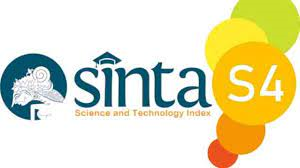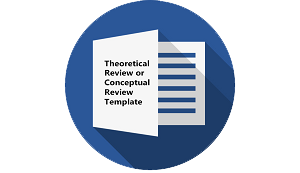Students’ Perception on the Implementation of Moodle Web-Based in Learning Grammar
DOI:
https://doi.org/10.30957/ijoltl.v8i2.537Keywords:
information communication technology, moodle, independent learning.Abstract
Students in tertiary educational level in Indonesia, particularly at a state university in Central Sulawesi are required to write a scientific paper as one of the requirements to complete their study period. The government even requires them to publish it in the academic online journal. It means that students construct it in the English language which students consider that writing an English article is difficult. Students produce several grammatical mistakes in their writing. They thought that learning grammar is such a difficult lesson and learning instruction is not interesting as teachers rely on one main resource. Nowadays, based on the researchers' investigation that there are several constraints that make the teaching-learning grammar is not effective and interesting; lack of references, time and space. While students need time to practice the language. Moodle as a part of information technology tools contributes to the solution to that constrain. After experiencing the grammar teaching-learning instruction, most students respond positive view toward the implementation of Moodle in the grammar teaching-learning process. Overall, almost all students respond that online learning instruction is needed.
Downloads
References
Suriaman., A.. (2016). Students and Teacher Perception on the Role of ICT in Promoting Instruction for Quality Teaching and Learning in Central Sulawesi,Indonesi. Asian EFL, 1.
Ammanni, and Aparanjani, U. (2016). The Role of ICT in English Language Teaching and Learning. International Journal of Scientific and Engineering Research, 7(7).
Aunurrahman, Hamied, F.A., A., & Emilia, E. (2017). Exploring The Tertiary Efl Students ’, 7(1), 72–79. DOI: https://doi.org/10.17509/ijal.v7i1.6860
Boskovic, V., Gajic, T., and Tomic, I. (2014). Moodle In English Language Teaching. Sinteza,Internet and Education, 480–483. https://doi.org/10.15308/SInteZa-2014-480-483 DOI: https://doi.org/10.15308/sinteza-2014-480-483
Brinton, D. M. (1991). The Use of Media in Language Teaching. In M. Celce-Murcia (Ed.), Teaching English as a Second and Foreign Language (2nd ed., pp. 454–485). Boston: Heinle & Heinle Publishers.
Budianto, L. (2014). Promoting Students’ Autonomous Learning through ICT Based Learning in ICP: A Case Study. LINGUA, 9(2), 125–134. DOI: https://doi.org/10.18860/ling.v9i2.2734
Harmer, J. (2007). The Practice of English Language Teaching (4th ed.). England: Person Education Limited.
Herrington, J. and Kervin, L. (2007). Authentic learning supported by technology : 10 suggestions and cases of integration in classrooms, 44(3), 219–236. DOI: https://doi.org/10.1080/09523980701491666
Husin, M.S and Nurbayani, E. (2017). The Ability of Indonesian EFL Learners in Writing Academic Papers, 17(2), 237–250. DOI: https://doi.org/10.21093/di.v17i2.725
Kassim, H., & Ali, Z. (2007). The Use of ICT in the Implementation of Student-Centered Learning (SCL). Internet Journal of E-Language Learning & Teaching, 4(1), 15–31.
Kervin, L. K., Reid, D., Vardy, J., Hindle, C., Kervin, L., Reid, D., … Hindle, C. (2006). A partnership for iPod pedagogy : using the technology of millennial learners across educational contexts of millennial learners across educational contexts, 419–422.
Maricic, I. (2012). The Use of ICT in the Teaching of English Grammar. Sweden: Linnaeus University: School of Language and Literature.
Megaiab, M. M. A. (2014). The English Writing Competence Of The, (2000), 187–192.
Sabar, Kurniawan dan Rahman, A. (2011). Penggunaan Web (E-Learning) dalam Proses Pembelajaran Bahasa Inggris di Briton International Eglish School Makkasar. Komunikasi KAREBA, 1(4), 444–456.
Santyasa, I. W. (2007). Landasan KOnseptual Media Pembelajaran. Banjar Angkan Klungkung.
Schreck, Richard dan Schreck, J. (1991). Computer-Assisted Language Learning. In Teaching English as a Second and Foreign Language (pp. 472–487).
Sugiyono. (2014). Metode Penelitian Kuantitatif Kualitatif dan R&D. Bandung: Alfabeta.
Yunus, M. M., Lubis, M. A., & Lin, C. P. (2009). Language Learning via ICT: Uses, Challenges, and Issues. Information Science and Applications, 6(9), 1453–1467.
Downloads
Published
How to Cite
Issue
Section
License
Authors who publish with this journal agree to the following terms:
- Authors retain copyright and grant the journal right of first publication with the work simultaneously licensed under a Creative Commons Attribution-ShareAlike 4.0 International License that allows others to share the work with an acknowledgement of the work's authorship and initial publication in this journal.
- Authors are able to enter into separate, additional contractual arrangements for the non-exclusive distribution of the journal's published version of the work (e.g., post it to an institutional repository or publish it in a book), with an acknowledgement of its initial publication in this journal.
- Authors are permitted and encouraged to post their work online (e.g., in institutional repositories or on their website) prior to and during the submission process, as it can lead to productive exchanges, as well as earlier and greater citation of published work (See The Effect of Open Access).












